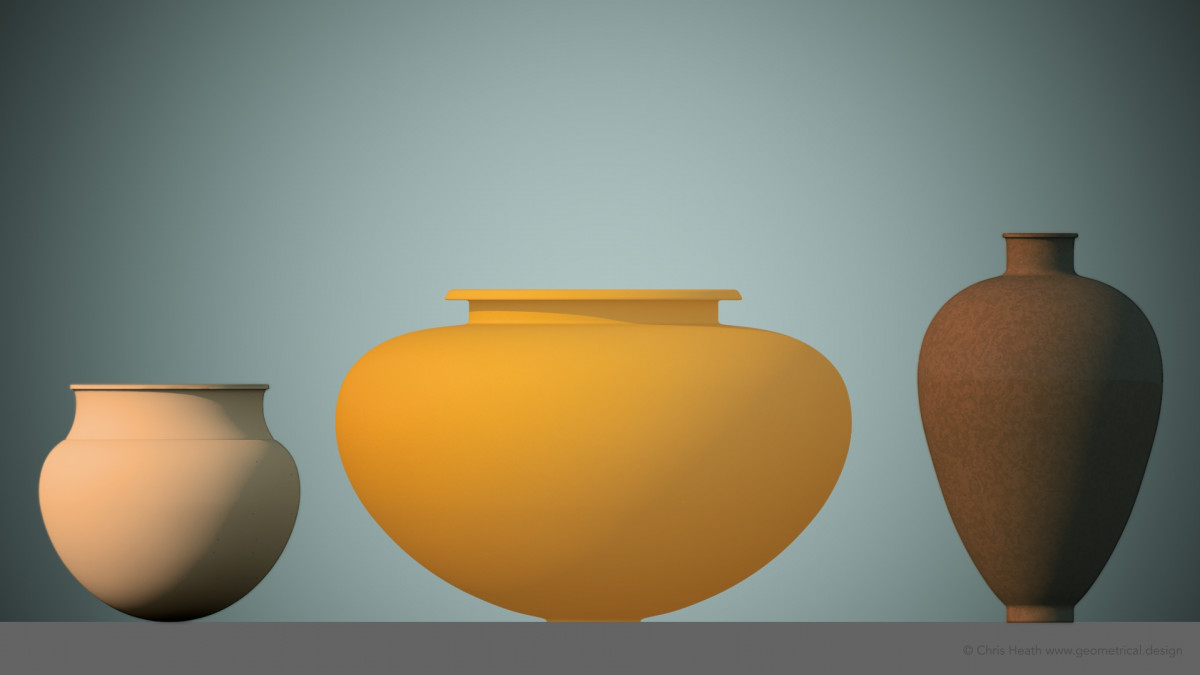The Greek Vase

A geometric method for designing elegant Greek vase and amphora profiles using dynamic symmetry, interpenetrating cylinders, and conic sections.
This blog post about Greek Vase profiles draws on the work of two sources. One is Jay Hambridge's book 'Dynamic Symmetry – The Greek Vase' that was published in 1920 by Yale University Press, the other is R.F. Orfeur's 'The Geometrical Origins of Certain Curves in Pottery and Architecture' published in the R.I.B.A Journal in November 1955.
Hambridge's book and Orfeur's article cover their corresponding methods to draw Greek Vase profiles. I first researched these methods in the early 1990's for my Master's thesis. I no longer have access to Hambridge's book held at Auckland University's School of Architecture library and I have since lost my copy of Orfeur's article that was given to me by Architect Neil Kirkland. Thanks to the internet, Hambridge's book can be found online and downloaded for free.
Orfeur's Hypothesis
Because I have long since lost my copy of Orfeur's article, I am having to remember what it was that Orfeur proposed. This as I recollect, is the hypothesis that Greek vase forms can be geometrically derived from the shapes are visible when two tubes or cylinders of different diameters interpenetrate each other.

When viewed from the front, the interpreting shapes reveal nothing. However, when viewed from above, the shape that can be seen resembles a closed curve with only one axis of symmetry; a vase-like shape.

Orfeur goes further by interpenetrating an extruded hyperbolic spline with a round cylinder. Orfeur refers to both these shapes as cylinders; one round and the other hyperbolic.

Orfeur offers a method for drawing this curve geometrically. Below are the steps that can be used to establish the curve of the vase shape above. While Orfeur used any rectangle, I chose to use a root-three rectangle that was one of the rectangles used by Hambridge. It's also a rectangle that is fundamental to the construction of six-fold Islamic geometric patterns, and Gothic architectural forms.
A Greek Vase – Geometrical Construction

I hope you find this approach intriguing. If you give it a go, I'd love to see what you do with this information. Over time, I'll expand this blog post to include more examples.

Categories: : Dynamic Symmetry, Geometry, Grid Design
 Chris
Chris 